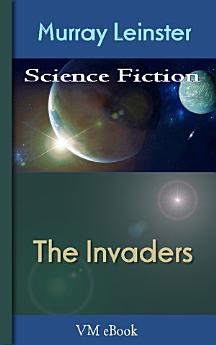The Invaders: Leinster'S Science Fiction
About this ebook
It was a shrill yell, and it traveled fast. Coburn jerked his head upright from the hood of the car. A whiskered villager with flapping trousers came pounding up the single street. His eyes were panic-stricken and his mouth was wide. He emitted the yell in a long, sustained note. Other villagers popped into view like ants from a disturbed ant-hill. Some instantly ran back into their houses. Others began to run toward the outskirts of the village, toward the south....
Ratings and reviews
About the author
Murray Leinster (June 16, 1896 – June 8, 1975) was a nom de plume of William Fitzgerald Jenkins, an award-winning American writer of science fiction and alternate history. He wrote and published more than 1,500 short stories and articles, 14 movie scripts, and hundreds of radio scripts and television plays.
Leinster was born in Norfolk, Virginia, the son of George B. Jenkins and Mary L. Jenkins. His father was an accountant. Although both parents were born in Virginia, the family lived in Manhattan in 1910, according to the 1910 Federal Census.
He began his career as a freelance writer before World War I; he was two months short of his 20th birthday when his first story, "The Foreigner", appeared in the May 1916 issue of H. L. Mencken's literary magazine The Smart Set. Over the next three years, Leinster published ten more stories in the magazine. During and after World War I, he began appearing in pulp magazines like Argosy, Snappy Stories, and Breezy Stories. He continued to appear regularly in Argosy into the 1950s. When the pulp magazines began to diversify into particular genres in the 1920s, Leinster followed suit, selling jungle stories to Danger Trails, westerns to West and Cowboy Stories, detective stories to Black Mask and Mystery Stories, horror stories to Weird Tales, and even romance stories to Love Story Magazine under the pen name Louisa Carter Lee.
Leinster's first science fiction story, "The Runaway Skyscraper", appeared in the February 22, 1919 issue of Argosy, and was reprinted in the June 1926 issue of Hugo Gernsback's first science fiction magazine, Amazing Stories. In the 1930s, he published several science fiction stories and serials in Amazing and Astounding Stories (the first issue of Astounding included his story "Tanks"). He continued to appear frequently in other genre pulps such as Detective Fiction Weekly and Smashing Western, as well as Collier's Weekly beginning in 1936 and Esquire starting in 1939.
Leinster is credited with the invention of parallel universe stories. Four years before Jack Williamson's The Legion of Time came out, Leinster published his "Sidewise in Time" in the June 1934 issue of Astounding. Leinster's vision of extraordinary oscillations in time ('sidewise in time') had a long-term impact on other authors, for example Isaac Asimov's "Living Space", "The Red Queen's Race", and The End of Eternity.









